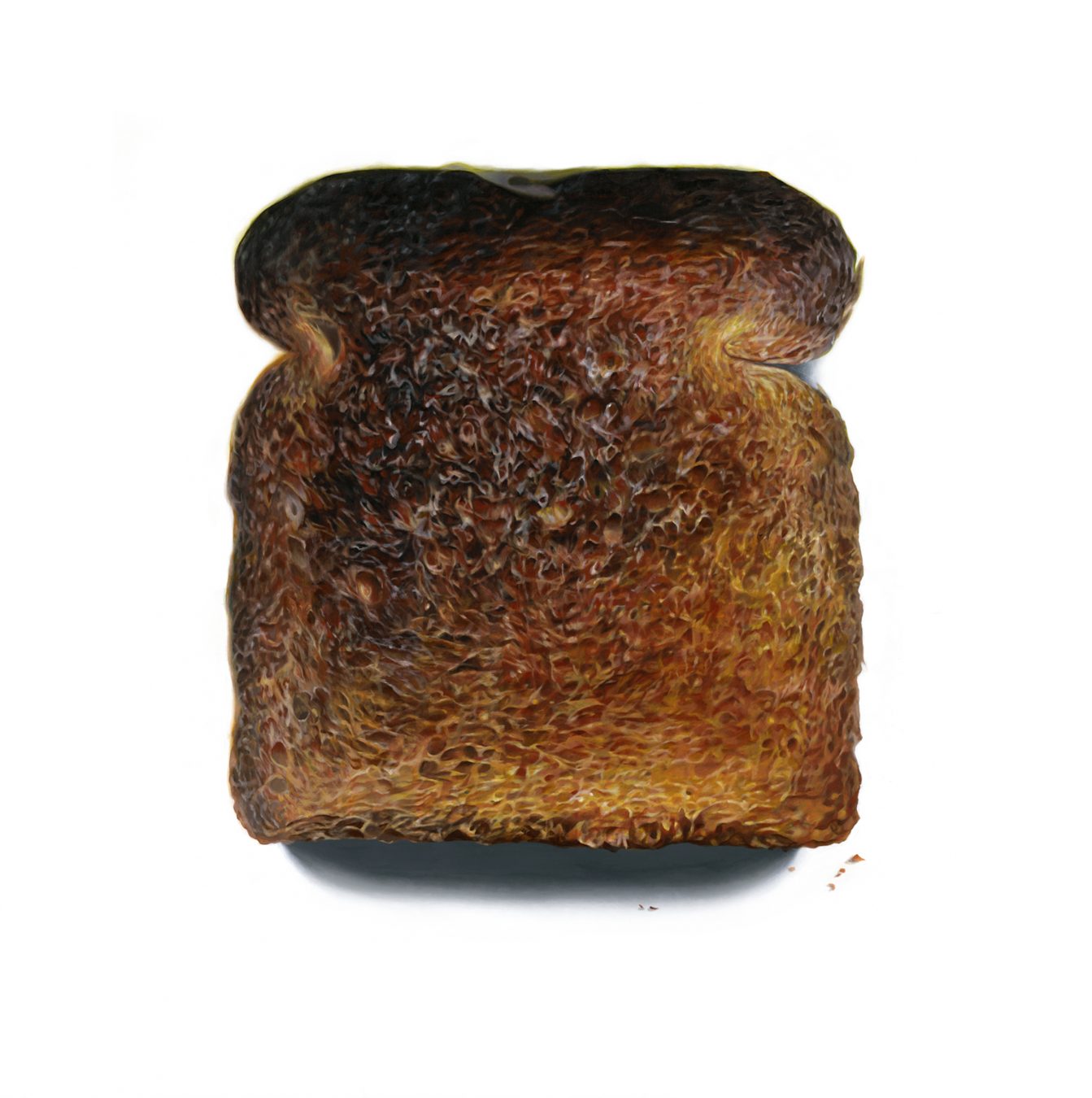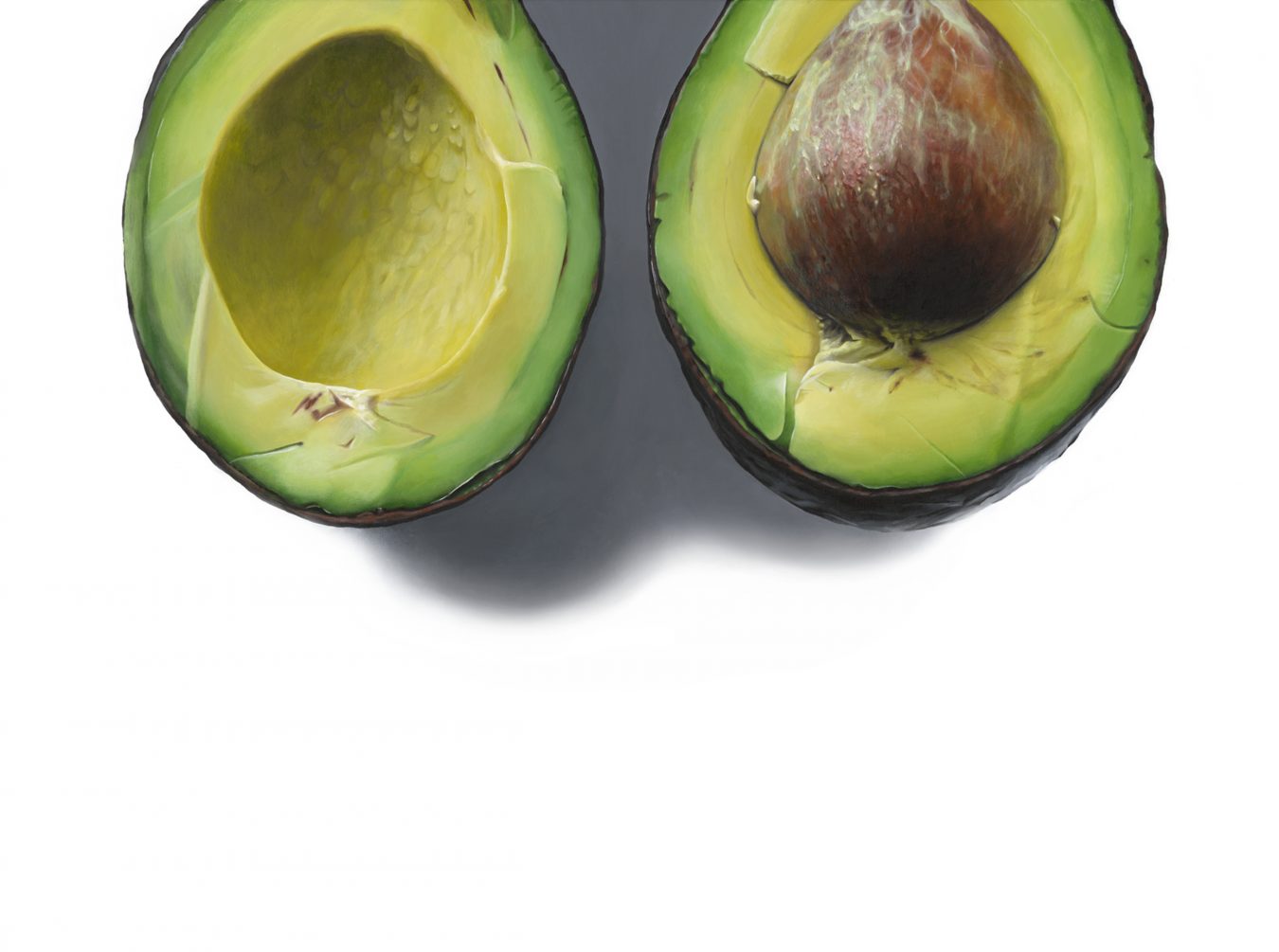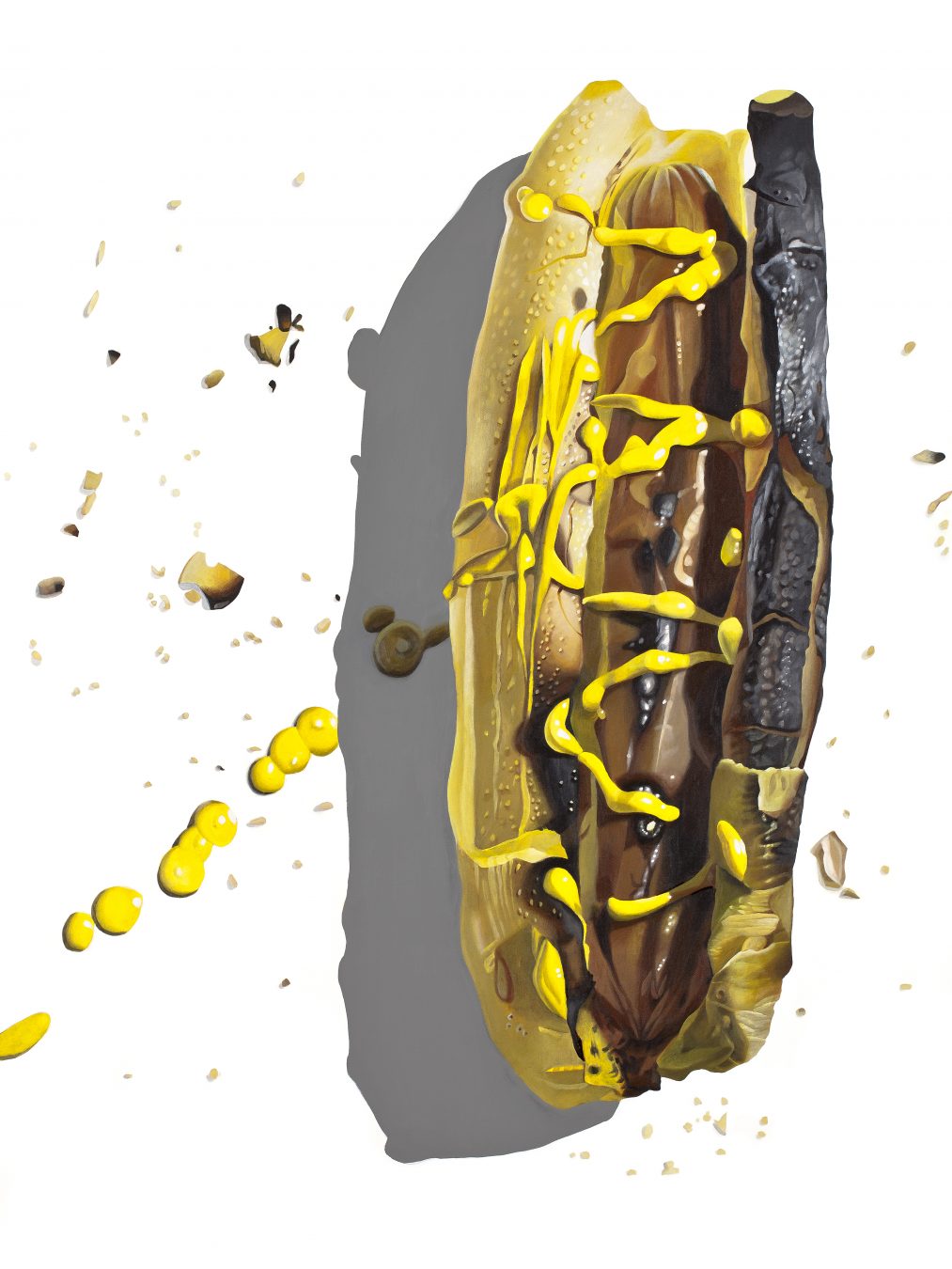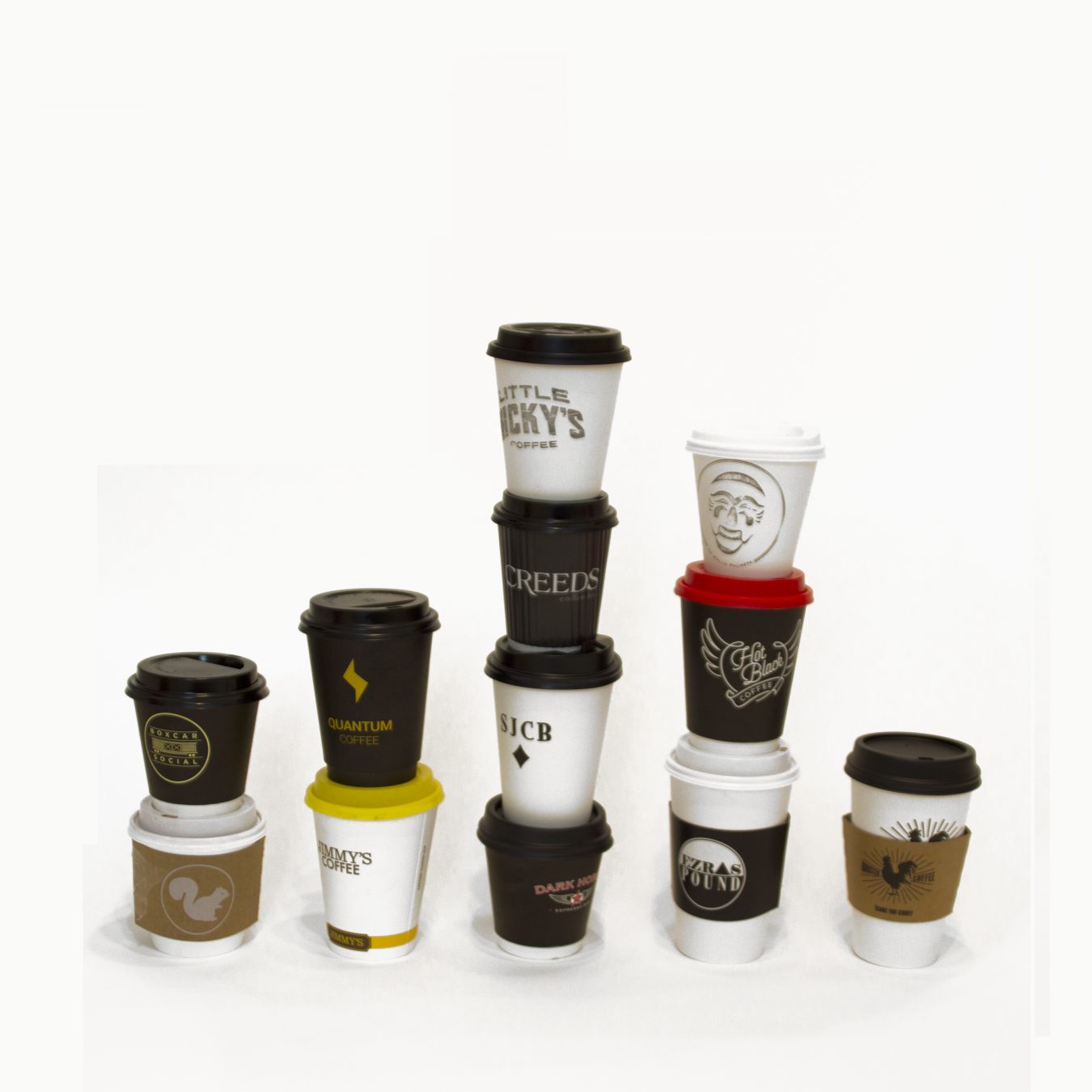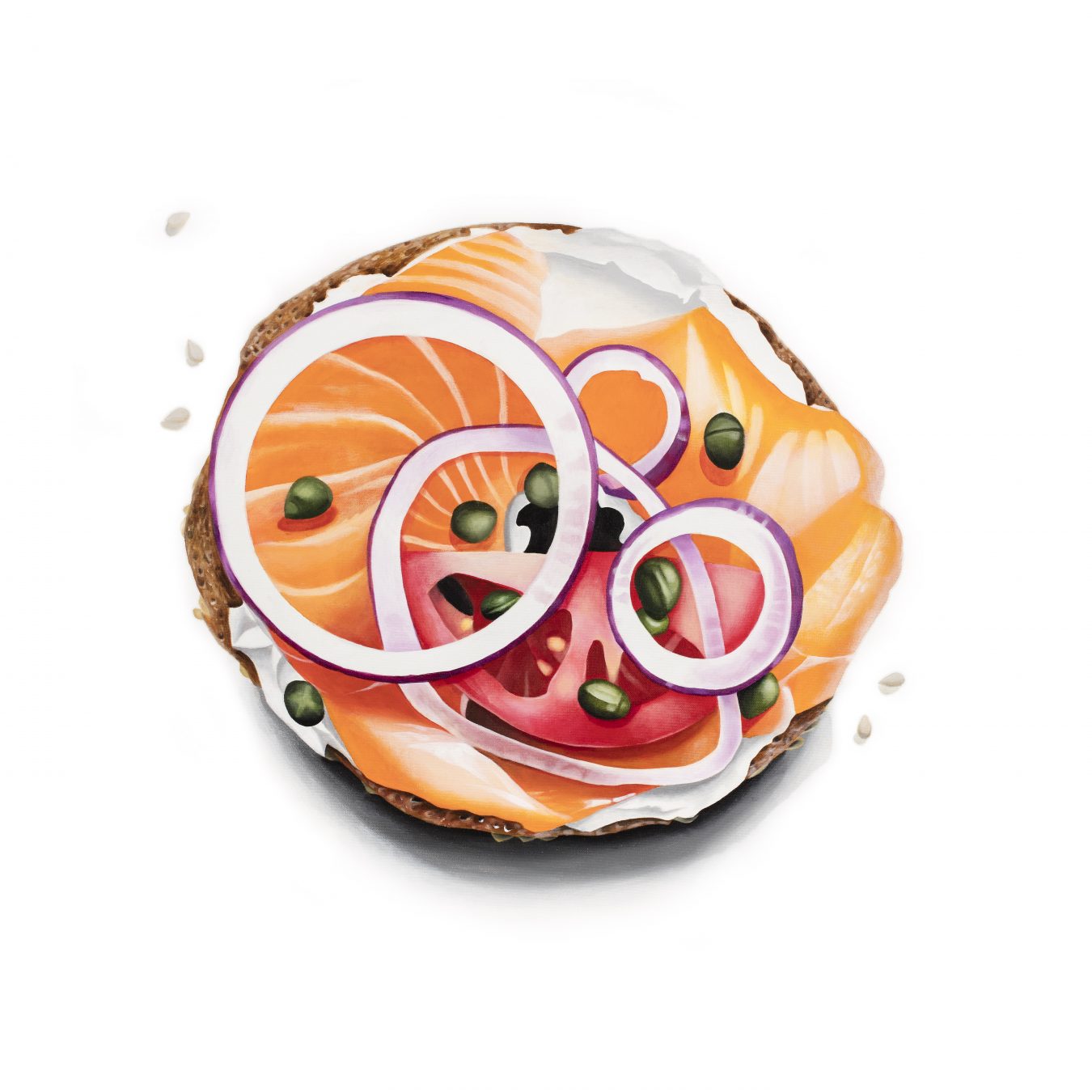Toronto-based painter Erin Rothstein’s art not only ignites the viewer’s primal instincts of hunger, it also starts a conversation. Her whimsical yet lifelike paintings of avocados, pickles, and coffee cups are a perfect postmodern blend of pop art, surrealism, minimalism, and hyperrealism.
I discovered you through your piece Coffees of Toronto at Beauchamp Art Gallery in downtown Toronto. What was the inspiration behind that painting?
I wanted to celebrate the city of Toronto, which has such a great coffeescape and foodscape. I wanted to build almost a cityscape of coffee cups. I thought that would be clever and fun. I love coffee and I am always thinking of compositions and subjects that would be interesting. Also, people have a personal emotional response when it comes to coffee and their favourite coffee place. So I wanted to relate to that.
Was there any logic to the composition?
I just arranged it in terms of the aesthetic of the cups, so just playing around with them based on their design. I chose cups from the places that I really love.
Recently I saw a poster print with coffee cups of New York.
Yes, I saw it too, after I made my painting. I guess it’s a popular trend. Great minds think alike.
Speaking of great minds, which artists have influenced your work?
My late grandfather was a painter, and my mother and my uncle are also artists. Nobody has done it as their sole profession, but I grew up surrounded by these very realistic painters, so I’ve always gravitated to it. Huge influences on me in my earlier years were René Magritte and M.C. Escher, and in my undergrad years [at Concordia] I was really influenced by James Rosenquist. Later in my career, Mary Pratt was someone I looked at. Then there are artists who influenced me, but you wouldn’t necessary make those connections; I like Gerhard Richter and the way his paintings evoke this organized chaos. For example, I painted a hot dog that is drizzled carelessly with mustard. It is a messy and silly subject, but done in a very controlled way.
You also studied in Italy.
I studied drawing for a month in a tiny place called Acquapendente. We were mostly doing landscapes. It was an amazing experience to be in a culture that is so entrenched in this passion for food and wine, and I ate the best food of my entire life. I’m sure that has informed where I am now.
Have you always painted food?
I’ve been painting food for the last eight years. I’ve always painted hyperrealistically, but I would always get blocked after three or four paintings. And then my husband said, “Why don’t you paint food on a white background? It would be so fun and easy for you as a way to unblock yourself.” And I did it, I loved it, and I just never stopped.
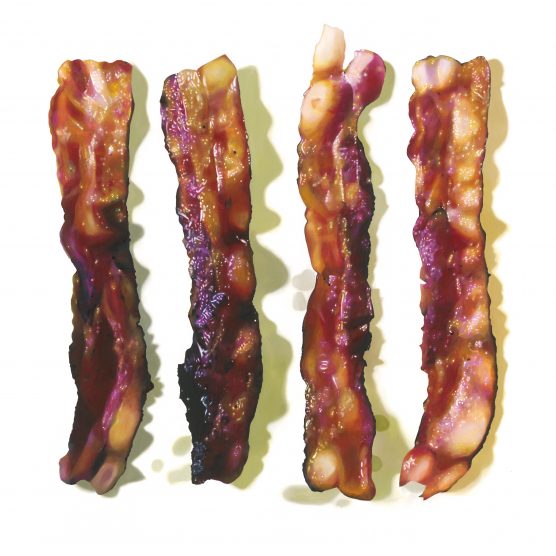
Do you feel there’s a correlation between social media’s popularization of food and your paintings?
Definitely. Food and foodie-ness have become very trendy. It’s great that people are celebrating the food and the aesthetics of it. There is also a trend towards minimalism, and my paintings are a perfect marriage between those two. I use Instagram for a lot of my inspiration. I don’t like to follow trends, but this is a trend I don’t mind being a part of.
What is your favourite food to cook, to eat, and to paint?
Oh, that’s so interesting. It depends on my mood. That’s how I do my cooking. I am very eclectic. I am very open about all types of foods. And it goes for my paintings, too; I decide spur of the moment. I sit in front of a blank canvas and paint whatever comes to mind. It’s more about giving me that feeling of excitement and fulfillment. It can be anything from a steak to a bowl of Kraft Dinner, which is one of my favourite things in the entire world. Some of my paintings are artisanal cookies, and some are Tim Hortons donuts—simple things that bring people lots of happiness.
So how do you pick what you are going to paint?
I choose foods that, first of all, mean something to me in terms of evoking a certain primal feeling in either myself or a viewer, whether it is a taste or nostalgia. Once I painted a lobster claw, which triggered an exciting feeling in me. But for someone else it could be aggressive; some people don’t like seafood. It is very important to me to get people talking and to get them emotional. Aesthetics are obviously very important. Also, people are having a lot of fun with their homes now—they want their homes to be representations of their personalities. They are more open to quirky, fun, minimalist art. So, it’s not only about the foods that you are eating, but about your experience with them. You have to fundamentally enjoy it on any level that matters to you.

